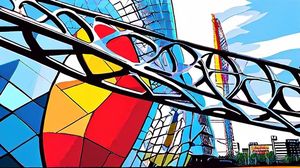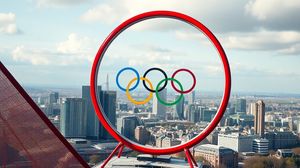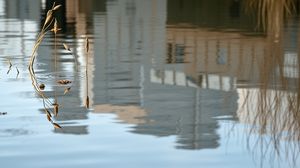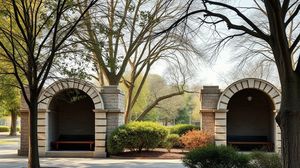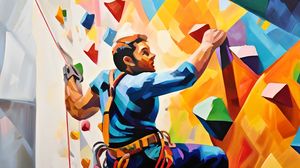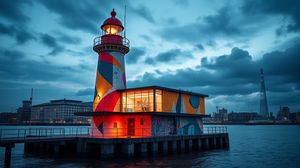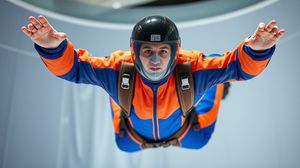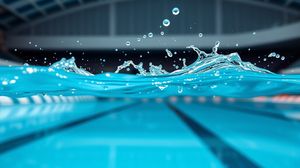
Designed by the renowned architect Zaha Hadid, the London Aquatics Centre is an architectural masterpiece located in the Queen Elizabeth Olympic Park. It was originally built for the 2012 Summer Olympics and Paralympics, hosting events such as swimming, diving, and synchronized swimming.
The signature design of the Aquatics Centre features a sleek, wave-like roof that swoops dramatically over the pool area. This iconic roof was inspired by the fluid geometries of moving water, creating a building that is as visually striking as it is functional.
One of the standout features of the centre is its ability to transform its seating capacity. For the Olympics, it accommodated 17,500 spectators, but it was later reconfigured to a more intimate 2,800 seats for public use, making it more suitable for regular swimming activities and competitions.
The centre provides two 50-metre Olympic-sized swimming pools and a separate diving pool, attracting athletes and swimming enthusiasts alike. The water quality is maintained through advanced filtration systems, ensuring a pristine swimming experience.
An interesting fact about the Aquatics Centre is that its construction required 180,000 tonnes of soil to be excavated and replaced, which was enough to fill 72 Olympic-sized swimming pools! This highlights the extensive engineering efforts undertaken to build the facility.
The venue is not only a hub for sports but also plays an important role in the community, offering swimming lessons and fitness classes, making it accessible and beneficial for local residents and visitors.
Visitors are often intrigued by the 'floating' platform in the main pool area, which acts as a movable floor. This feature adjusts in height, allowing the pool to be customized for various activities, from deep-water sports to shallow-water training and rehabilitation.
Despite its focus on competitive swimming, the London Aquatics Centre also boasts a legacy of sustainability. The building's design incorporates environmentally friendly features such as the extensive use of natural lighting, helping to minimize its carbon footprint.

Making the Most of Your Visit:
Start your visit by checking out the stunning wave-like roof. It's best appreciated from the outside, where you can truly see its sweeping curves and get some fantastic photos.
Be sure to take a swim in the Olympic-sized pool—it's not every day you get to swim in the same lanes as Olympic athletes! The facility often has lanes open for public swimming, so look out for those sessions.
If you or any of your travel companions are interested in diving, the Centre offers classes and sessions on the boards used during the Olympics. It's a unique opportunity and worth booking in advance.
The movable floor is an engineering marvel here. If you're lucky enough to visit during a transition period, take a moment to watch how the space transforms for different activities. It's not only fascinating but also demonstrates incredible versatility.
Bring your own towel and swimming cap. Caps are mandatory in the pool, and while you can rent towels, having your own saves a few pennies and the hassle.

Visiting Times & Costs:
The London Aquatics Centre is open to the public and offers various activities, including public swimming sessions, diving lessons, and fitness classes. It operates year-round, but opening times may vary based on scheduled events or maintenance.
Typically, the Centre is open from 6:00 AM to 10:00 PM on weekdays, and from 8:00 AM to 6:00 PM on weekends. However, it is advisable to check specific timings in advance, especially during holidays or special events.
Entrance fees apply depending on the activity. For a standard public swim session, adults can expect to pay around £4.95, while children's fees are approximately £2.95. Prices may vary for other activities such as diving lessons or fitness classes. Always verify current pricing before planning your visit.
Accessibility:
- The London Aquatics Centre is designed to be accessible to all visitors, featuring ramps, elevators, and accessible changing facilities for those with mobility needs.
- Guide dogs are welcome, and there are hearing induction loops for hearing-impaired visitors.
- It is recommended to make any necessary arrangements in advance to ensure a smooth visit.

Address & Map:

Nearby:
